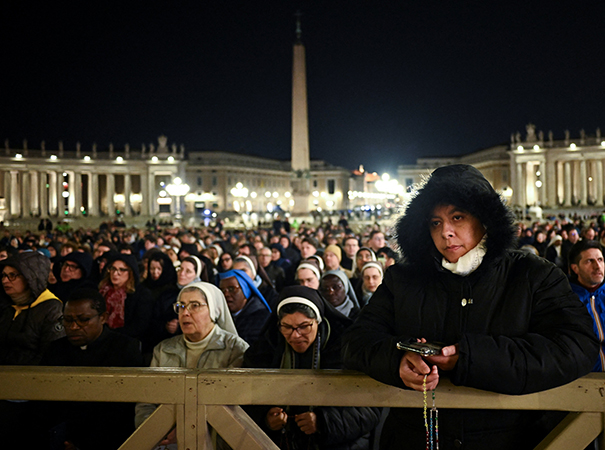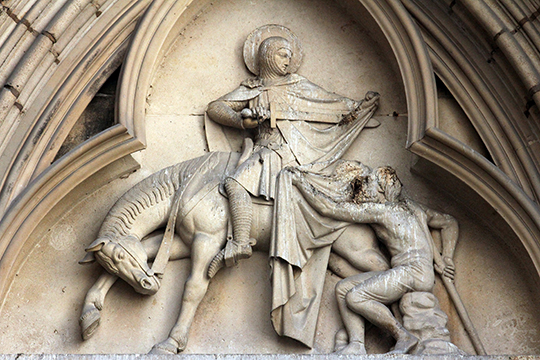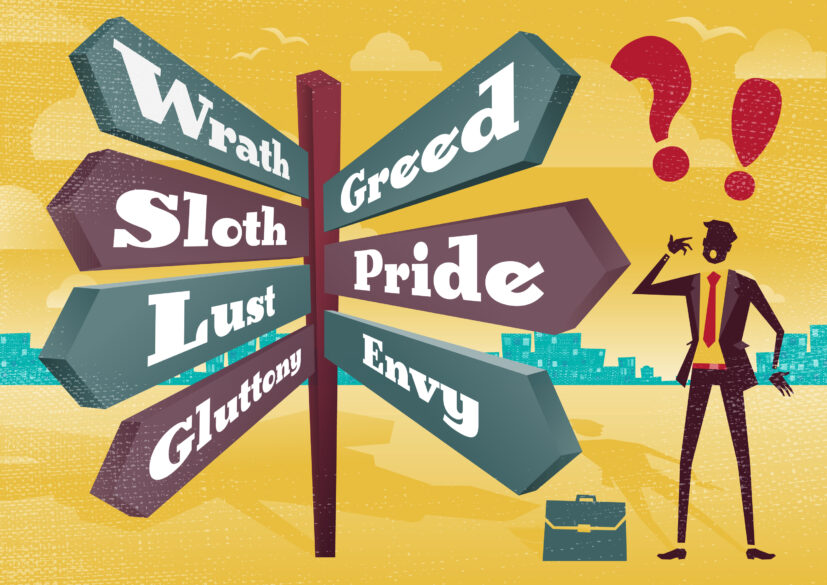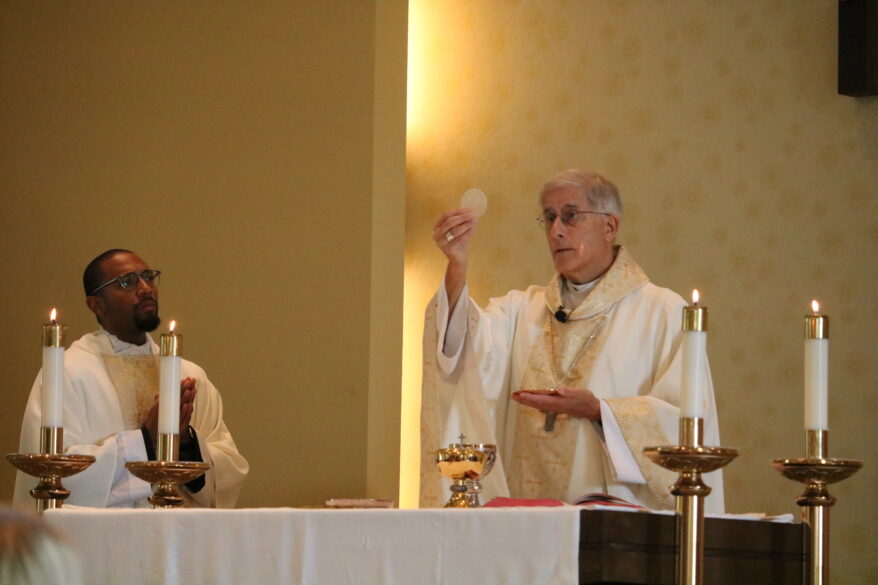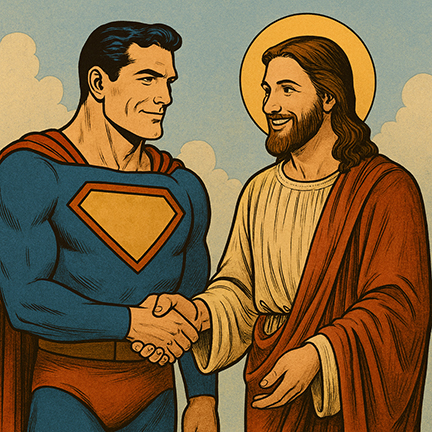
REFLECTIONS ON LIFE
By Melvin Arrington
Our world today seems overpopulated with fictional superheroes of all sorts. Humans, animals, aliens, robots – even something that looks like a monster may, in fact, be a superhero. They appear not only in comics, but also on TV shows, and on the big screen. The various media are saturated with them. What is it about these strange characters that has so captured the public imagination?
When I was a kid growing up in the 1950s, only one superhero captured my imagination, and that was Superman. In addition to being a devoted reader of comic books about the Man of Steel, I was also a huge fan of the popular TV show “The Adventures of Superman,” starring George Reeves. Whenever that program came on, you could always find me glued to the TV set. I was simply enchanted with that “strange visitor from another planet with powers and abilities far beyond those of mortal men.”
Like many boys my age, I wanted to be like Superman; actually, to be honest, I wanted to be Superman because he could do all kinds of amazing things: he was “faster than a speeding bullet, more powerful than a locomotive, able to leap tall buildings in a single bound.” He could also “change the course of mighty rivers” and “bend steel in his bare hands.” But most importantly, he could fly!
I have many wonderful childhood memories of playing with friends on swings. We would all try to see how high we could go. At the highest point I would bail out and, at least for a moment, fly through the air like my hero. Somehow I survived all those “flights” without any broken bones.
Back in those days the City of Jackson also afforded me an opportunity to pretend that I could fly. Do they still send trucks into neighborhoods to spray for mosquitoes? In the 1950s, it was a regular summertime occurrence. Some would ride their bicycles behind the truck, but whenever I saw it coming down our street, I would go get a towel (my makeshift cape), tie it around my neck, dash outside, and run through all that fog with my arms extended in front of me, like I was Superman flying through the clouds. Cumulatively, over several summers, I must have breathed in a truckload of that toxic spray (it was DDT back then). It’s surely a miracle that I made it to adulthood!
So why all this fascination with flying like Superman? Perhaps it’s because that famous superhero fulfills a desire in all of us for the supernatural, a longing to reach for something beyond our grasp. We yearn to escape our earthly limitations and soar upward to God, to the Source of our being. Whether we acknowledge it or not, we all have a hunger for the spiritual, for the infinite, for God; that’s the way the Creator made us. As St. Augustine said, “Our hearts were made for Thee, O Lord, and they are restless until they rest in Thee.” It’s not difficult to see how Superman can serve as a remedy for some of this restlessness. He can satisfy these cravings because he’s a kind of messianic figure, a Christ-like figure.
Superman was created by two 18-year-old Jewish boys in Cleveland, Ohio, in the late 1930s. During that decade Hitler would come to power, establish the Third Reich, and attempt to exterminate the Jews from the face of the earth. At the same time, our country (and the rest of the world) found itself mired in the depths of the Great Depression. The Jews needed a messiah, a savior, to rescue them from annihilation, and Americans needed a heroic figure, if only a fictional one, to lift our spirits. Superman satisfied both needs.
Let’s take a closer look at some of the parallels between Jesus and Superman. We know that the divine Son of God, is omnipotent; there are no limits to what He can do. We also know that the Man of Steel is a “strange visitor from another planet who came to Earth with powers and abilities far beyond those of mortal men.” Also, Jesus has a human nature and a divine nature, while Superman likewise has two identities: he is Clark Kent, “mild-mannered reporter for a great metropolitan newspaper,” as well as a superhero.
Jor-El is Superman’s father (“El” in Hebrew means “God”). Superman’s real name is Kal-El, and since he is Jor-El’s son, he serves as a type of the Son of God, Jesus, who is also God, the Second Person of the Holy Trinity. Moments before the planet Krypton is destroyed, Jor-El places his only son, baby Kal-El, in a small capsule and sends it out into space headed for the planet Earth. The space ship crashes in farmland in the state of Kansas. Jonathan Kent and his wife, Martha, discover the strange little boy in the wreckage, become his adoptive parents, name him Clark, and raise him in the American heartland.
In the 1978 film “Superman,” Clark is tempted to show off in front of a few kids from his high school by demonstrating some of the marvelous things he can do, but Mr. Kent advises caution, explaining to Clark that there’s a reason he has amazing powers. Clark eventually rises above these temptations, and when he becomes an adult, he leaves the farm, discovers why he was sent to Earth, and goes off to the crime-ridden city of Metropolis to fulfill his purpose: to save people everywhere from the forces of evil.
Similarly, God the Father sent His only Son, Jesus, from heaven to earth to be our redeemer. Our Lord grew up with Mary and his foster father, Joseph, in the backwater town of Nazareth.When it was time to begin His ministry, Jesus left home and went into the wilderness to fast and pray. There, Satan came and offered Him three temptations, but Our Lord refused each one because He had to accomplish the purpose for which He was sent. In Jerusalem, after overcoming another great temptation in the Garden of Gethsemane, He went to Calvary and carried out His mission: to save us from our sins by dying on the Cross, and to defeat death by rising again on the third day.
We, too, should be on a mission. But what is our task? The 4th-century theologian St. Athanasius of Alexandria said, “the Son of God became man so that we might become God.” At first glance that sounds impossible, even though we know that we came from God, and one day we hope to return to Him. Perhaps our mission has something to do with Superman. If children can pretend to be the Man of Steel, why can’t we as adults try to be more like the Son of God?
(Melvin Arrington is a Professor Emeritus of Modern Languages for the University of Mississippi and a member of St. John Oxford.)


